Houseplant scale is a common indoor pest that creates a bit of a mess when it infests a host plant. Most houseplants are sadly pretty susceptible to scale, so-named due to their scale-like appearance, syrupy scent, or the shiny, sticky secretion of honeydew they leave behind.
Luckily, there are home remedies that can help you get control scale insects and save your houseplant.
In this article, we’ll walk you through how to get rid of scale on plants.
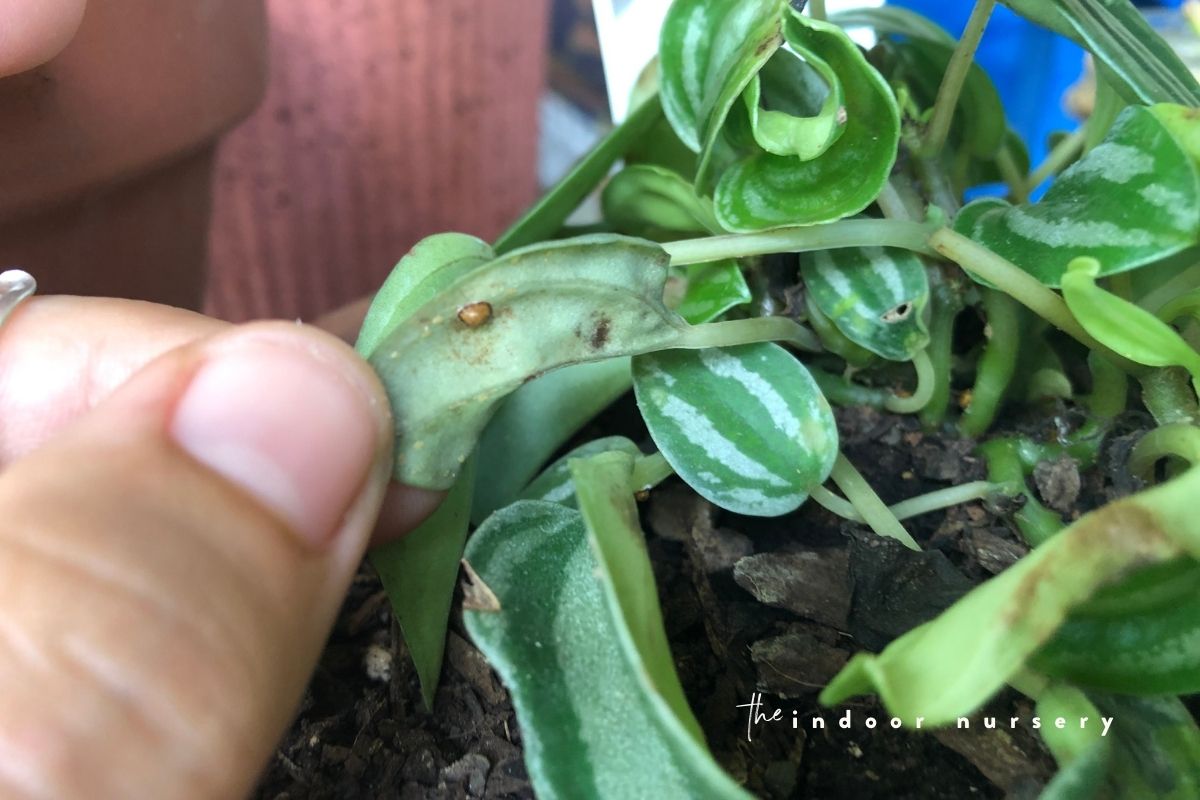
What Causes Scale On Plants?
Scale insects love monstera and a variety of other tropical plants, indoors and out. They take advantage of warm conditions in temperate regions to infest outdoor plants and crops and will survive year-round indoors on houseplants if they find their way in. When outdoors, scale insects have natural predators (mostly larger insects) that help control their populations. When they’re indoors, however, they often find sanctuary on houseplants without being disturbed.
A healthy houseplant can contract a scale infestation a few different ways. The insect may latch on to a plant after a new, infested plant is brought into the house. Scale can also infest a plant that is set outside for the summer, then thrive once brought back indoors if the host plant isn’t inspected for pests beforehand. Putting a plant in a pot or soil that has a scale population is another way to spread the pest.
Once a female scale insect establishes herself on a plant stem or leaf, it will sit in place and create a hard, protective shell-like coating, the scale for which it’s named. The insect lives under this hard little shell and feeds on the plant in place. As larvae are born, they spread to other parts of the plant, then establish themselves once they mature.
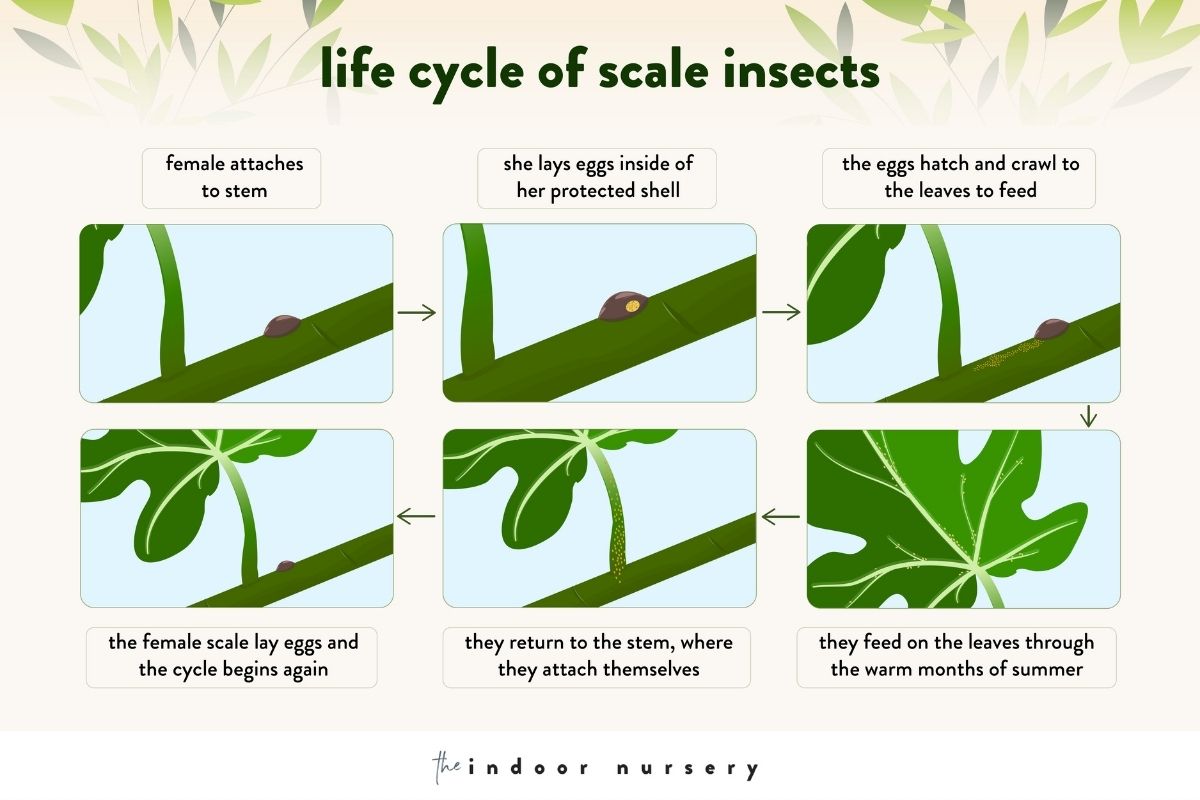
Scale insects like soft, fleshy plants that hold lots of moisture. They feed exclusively on phloem sap, the carbohydrate-rich fluid that is transported throughout a plant’s body for energy. The insect damages the plant’s leaf and stem tissue, then consumes the sap, depleting and stressing the plant.
This prompts the plant to attempt to rid itself of the pest by releasing a toxic chemical response, which leads to further damage to the plant’s tissues while it attempts to free itself from these nasty buggers!
You can see that our little peperomia watermelon became infested with scale after putting it outside for a couple days while it was raining. When we brought it back in, it was covered in the tell-tale signs of scale, along with discolored leaves and tiny little bugs.
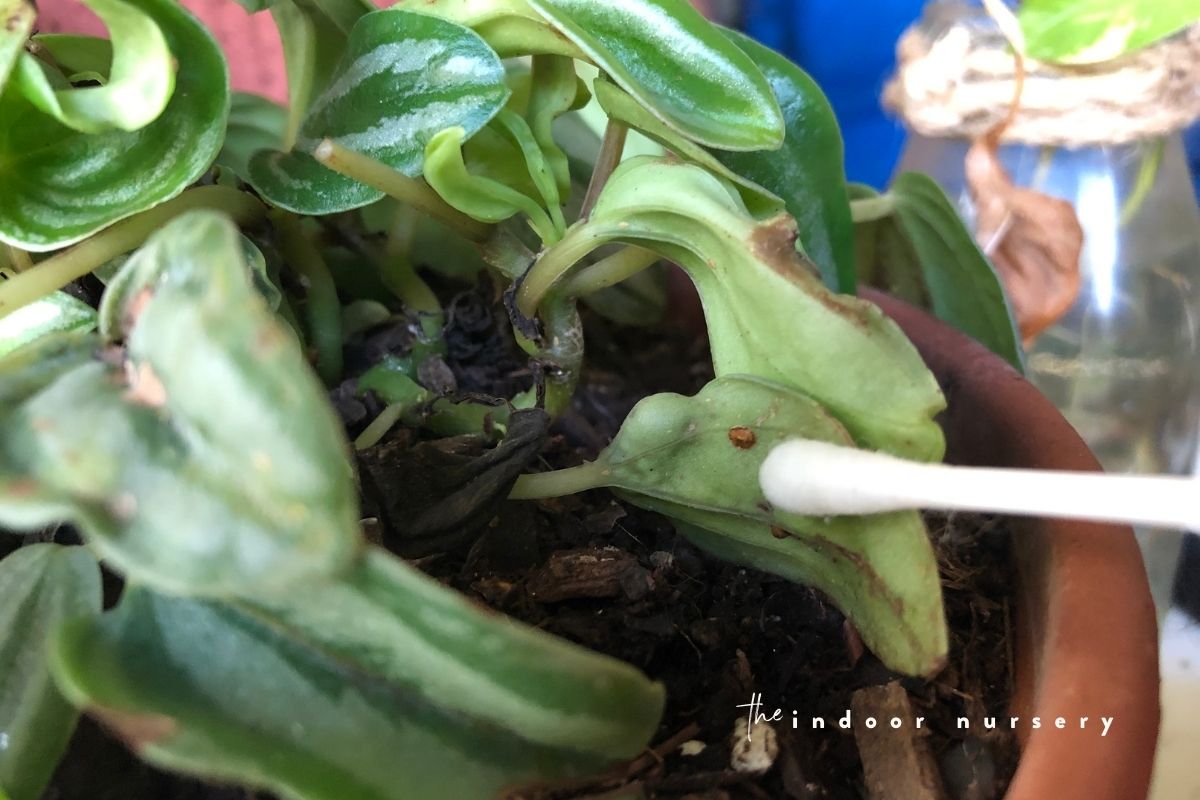
How To Identify Scale Bugs
Scale pests look like very small bumps or scales on the plant leaves, some bigger than others. There are two kinds of scale bugs: armored scale and soft scale. Mature scale insects are just a few centimeters large, and look like small white, beige, or brown bumps from afar.
There are a few ways to notice a scale infestation. First, the telltale sign of the namesake scale-appearance will show on the leaves of the plant where the mature females are positioned. If you don’t notice these, however, you may notice the sweet, syrupy smell of the honeydew produced by the insects; you may also notice a shiny, sticky substance on the leaves, and possibly dripping from them.
From the stress of the infestation, some leaves may turn yellow or start to brown 😬 The leaves might also develop dark spots or black sooty mold where the honeydew is rotting and damaging the tissue. A scale infestation can range from light and unnoticeable to severe and damaging to the plant. When your plant is looking stressed, inspecting for pests is one of the things you should do first. The sooner you can clear them off the plant, the sooner your plant can start recovering from the stress.
How To Remove Scale From Plants
Make sure you identify the scale before you start your attack. Scale bugs must be removed with some (gentle) pressure to be sure they are wiped completely from the leaf. It can be difficult to get rid of scale insects, but with some attention and the right materials, you can take care of this common pest and save your plant. Once your plant has been cleared of the pests, check plants regularly to be sure reinfestation doesn’t occur.
To remove scale bugs from your houseplant, you’ll need:
- Magnifying glass
- Cotton swabs, balls or pad
- Paper towels
- Pruning shears
- 70% Isopropyl rubbing alcohol, diluted neem oil, or another horticultural oil
- Gloves
Step 1: Verify the pest is scale
Examine the plant stems and leaves closely in good light and with a magnifying glass to be sure the insects are scaled. They are related to and may resemble, mealy bugs, but the scale is a bit trickier to get rid of because it burrows into leaves, and so must be manually and attentively removed.
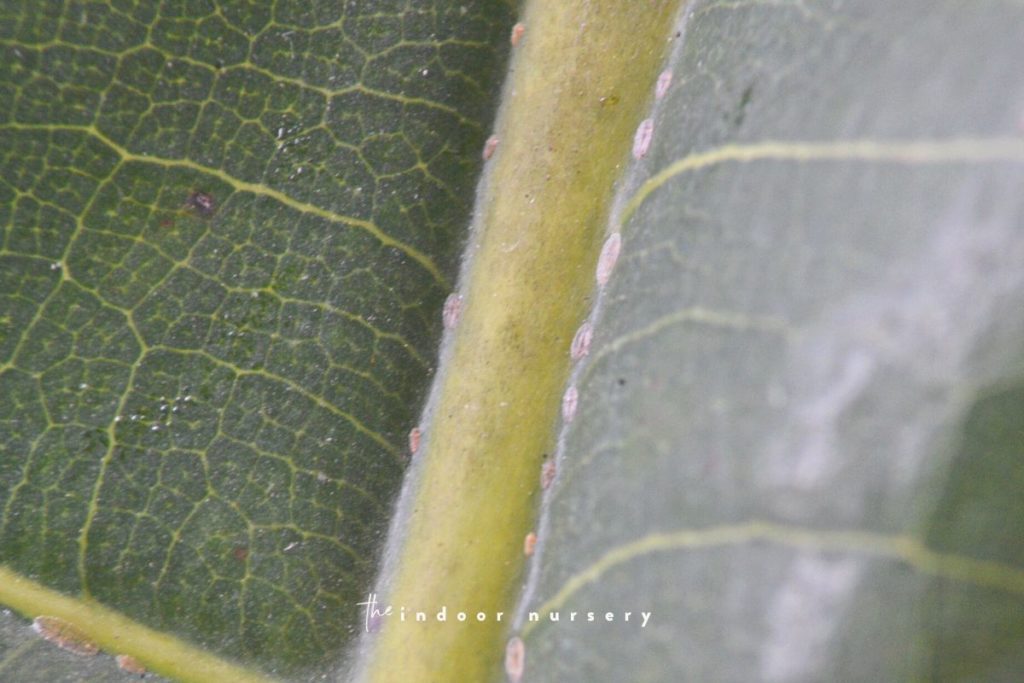
Move the infested plant away from any surrounding plants and take it outside, if possible, to clean the stems and leaves.
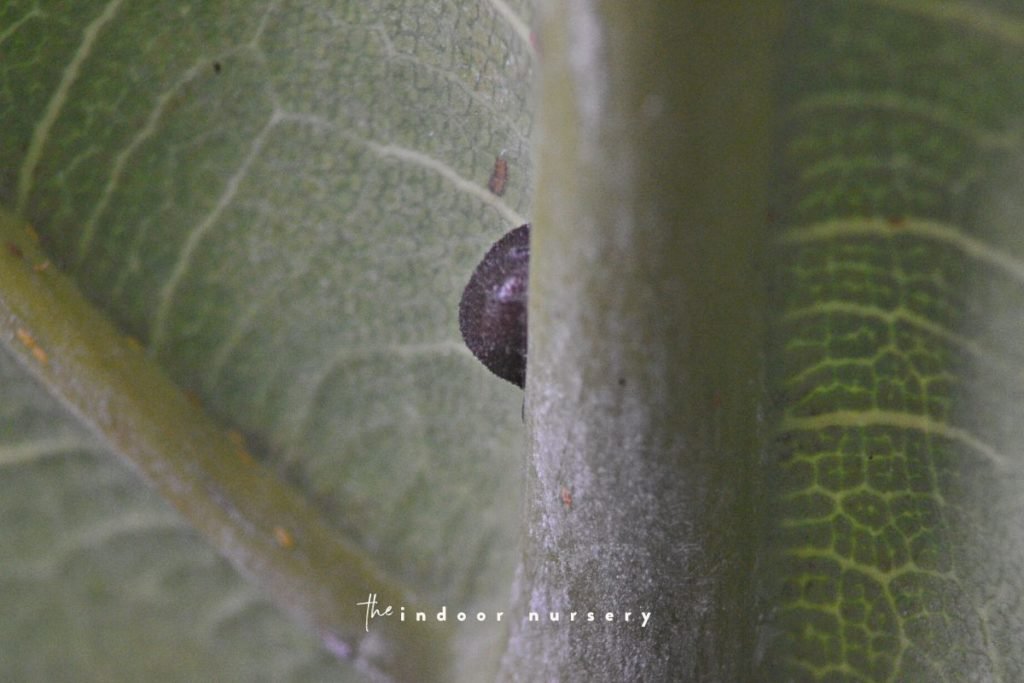
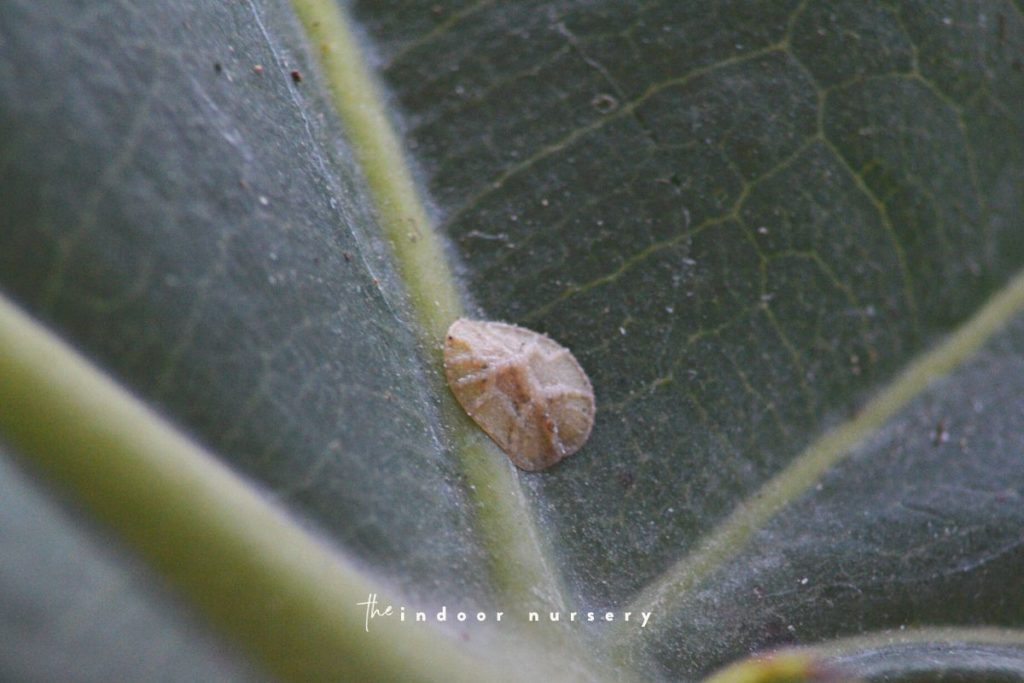
Step 2: Examine other plants and isolate the infested plant(s)
When you notice the scale insects on one plant, check the other plants in the room as well to see if the pests have spread. Male scale insects can fly and jump between plants, while leaves of separate plants that are touching can serve as a bridge for crawling scale bugs. Removing the infested plants to be cleaned in isolation will help you keep the problem from spreading.
Step 3: Remove damaged or heavily covered leaves
Depending on the number of insects present, some leaves may need to be removed due to extensive scale damage. Use pruning shears to clip leaves that can’t be saved, like ones that have yellowed, rotted, or have too many holes or scale bugs on them. Try to keep at least 50% of the plant’s leaves when you’re pruning. If the plant loses anymore than that, it will have a hard time recovering.
Step 4: Target the large ones you can see
Using the isopropyl alcohol on a cotton swab, wipe off the large-scale insects you see that are set in place on the leaf. This will kill scale insects and help lift and remove the waxy coating that is attached to the leaf. Just rinsing with water won’t be enough to remove these adult scale insects.
Step 5: Wipe off the leaves
You can use a cotton ball, cotton pad, or paper towel with rubbing alcohol to wipe down the leaves and stems of the entire plant for any smaller or loose bugs, larvae, and eggs. This will kill and remove them from the leaf and should be done 2 or three times with two to three days spaced in between each session.
You can choose to use neem oil or insecticidal soap instead of alcohol to remove the insects. I recommend starting with the rubbing alcohol as it’s the gentlest on the plant. If you want to try neem oil, like you might need to with an infestation, test it out on a healthy part of the plant first. If the plant is already under stress due to the scale insects, it may not be strong enough to survive a heavy coating of neem oil. Read our full guide on how to use neem oil for more details.
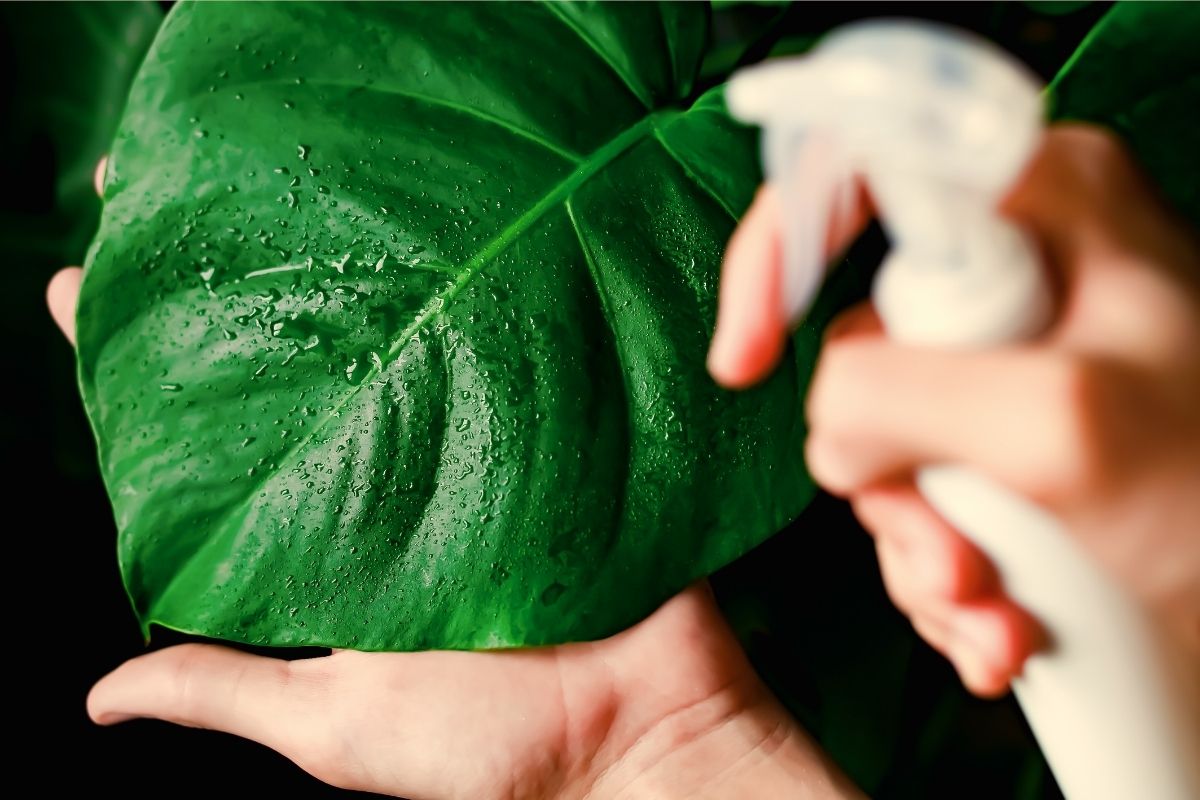
Wearing gloves will help protect your hands from the dead bugs and solution you use to wipe off the leaves, but if you do it without gloves, be sure to wash your hands immediately afterward.
If possible, leave the plant on its own for the week while it recovers and gets cleaned. If weather permits, leaving the plant outside may help it dry out better and remain isolated from the other houseplants.
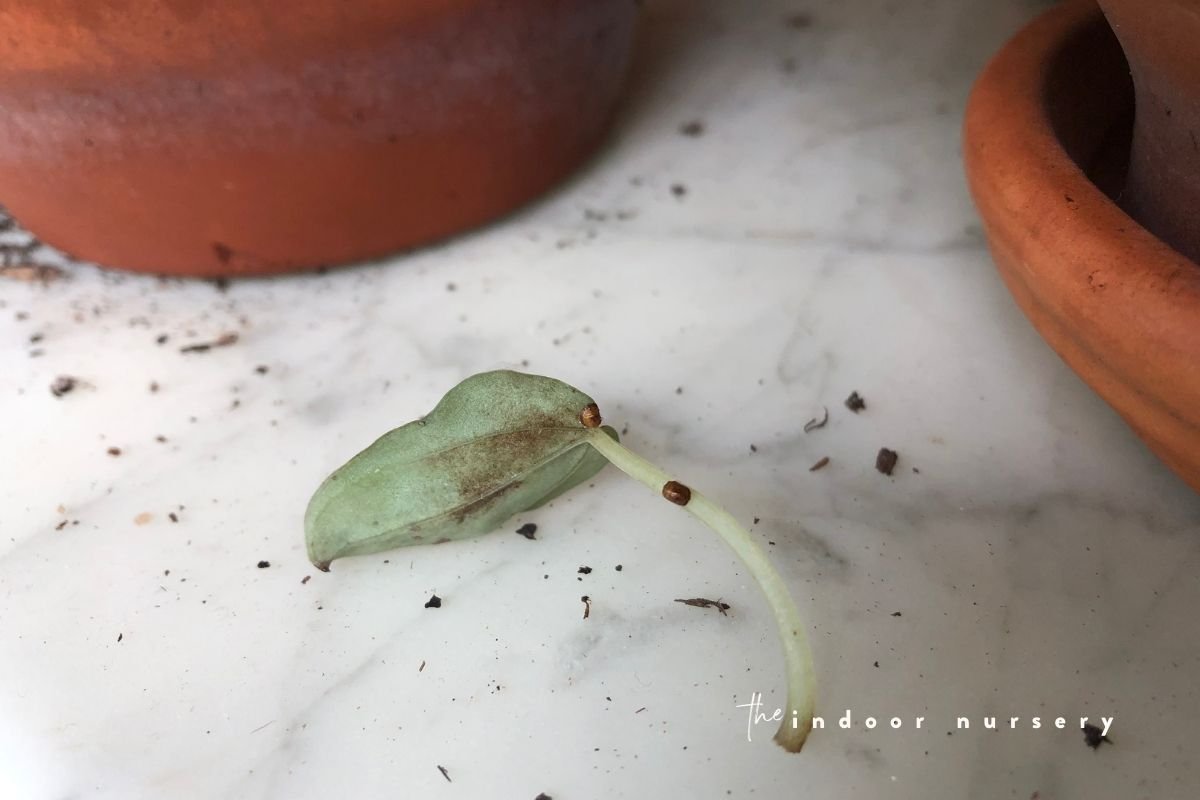
How To Prevent Scale On Plants
These pesky pests can be a nightmare for plant enthusiasts. Here’s a friendly expert guide on how to prevent them from making a home on your plants.
- Regular Inspection: The first step to prevention is regular inspection. Check the undersides of leaves, stems, and branches for any signs of scale or their sticky residue. Early detection can prevent a full-blown infestation.
- Isolate New Plants: Whenever you bring a new plant home, keep it isolated from your other plants for about two weeks. This quarantine period allows you to observe the new plant for any signs of scale or other pests.
- Maintain Optimal Health: A healthy plant is less susceptible to pests. Ensure your plants receive the right amount of water, light, and nutrients. Avoid over-fertilizing, as this can attract scale.
- Prune Infested Parts: If you notice a branch or leaf with scale, prune it immediately. This can prevent the pests from spreading to other parts of the plant.
- Natural Predators: Introduce beneficial insects like ladybugs and lacewings to your garden. They’re natural predators of scale and can help keep their population in check.
- Neem Oil: This organic solution acts as a repellent for scale. Mix a few drops of neem oil with water and spray it on your plants once a week. Not only does it deter scale, but it also gives your plants a shiny appearance!
- Avoid Overcrowding: Ensure your plants have ample space between them. Overcrowded plants can create a haven for scale, as they love hiding in tight spaces.
- Cleanliness: Keep the area around your plants clean. Remove any fallen leaves or debris, as these can harbor scale and other pests.
Common Questions About How To Get Rid Of Scale On Plants
Will my plant recover from a scale infestation?
Scale is common among plant pests and if the damage to the plant is caught before it progresses too far, it will recover with proper cleaning. It’s important to repeat the cleansing process a few times to be sure any microscopic living remnants of the insects, like scale eggs or invisible larvae, are removed completely. Don’t be afraid to remove a few leaves as necessary if it will save the plant. A very heavy scale infestation, however, might damage the plant beyond help if there is too much damage to leaves or stems.
How do I know if I have scale or mealybugs?
While scale and mealybugs, as well as aphids, are in the same insect family of sap-feeders, the main difference is in the waxy shell that the scale bug gets its name. The mature female scale bug doesn’t have legs, which is why it creates a protective shell-like structure. On the other hand, mealybugs will roam around on the plant their whole lives.
Will leaving the plant outside attract a new scale?
Scale is a widespread outdoor pest as well as one that targets indoor plants when possible. It’s not necessary to put the plant outside as you clean and dry it, but it does allow fresh air circulation to help dry the plant. When you use neem oil or another substance to remove the insects that remain on the plant, it will prevent new scale from being able to propagate on the plant. Cleaning it multiple times over will also help ensure that any other insects won’t take hold. Only put the plant outside when weather permits, as most indoor plants can’t be set outdoors in cool temperatures. A garage, an enclosed gazebo, or another semi-indoor space might also be the preferable option for the plant’s recovery period if there is one.
More How To Guides
- How To Get Rid Of Scale On Plants
- DIY Terrarium Table: How To Make A Table With Plants Inside
- How to Use Leca for Plants: Step-by-Step Guide with Pictures
- How To Use Grow Lights For Indoor Plants
- How To Propagate Peperomia Plants 2 Ways
- DIY Propagation Box With Grow Light
- How To Make Pothos Fuller (In 5 Minutes)
- How to Make a Moss Pole for Your Climbing Plants
- How to Make Potting Soil for Indoor Plants, Plus My Secret Ingredient
- How to Propagate a Split-Leaf Philodendron: Easy Step-by-Step Guide
- Tags:
- Pests
- Scale on Plants


